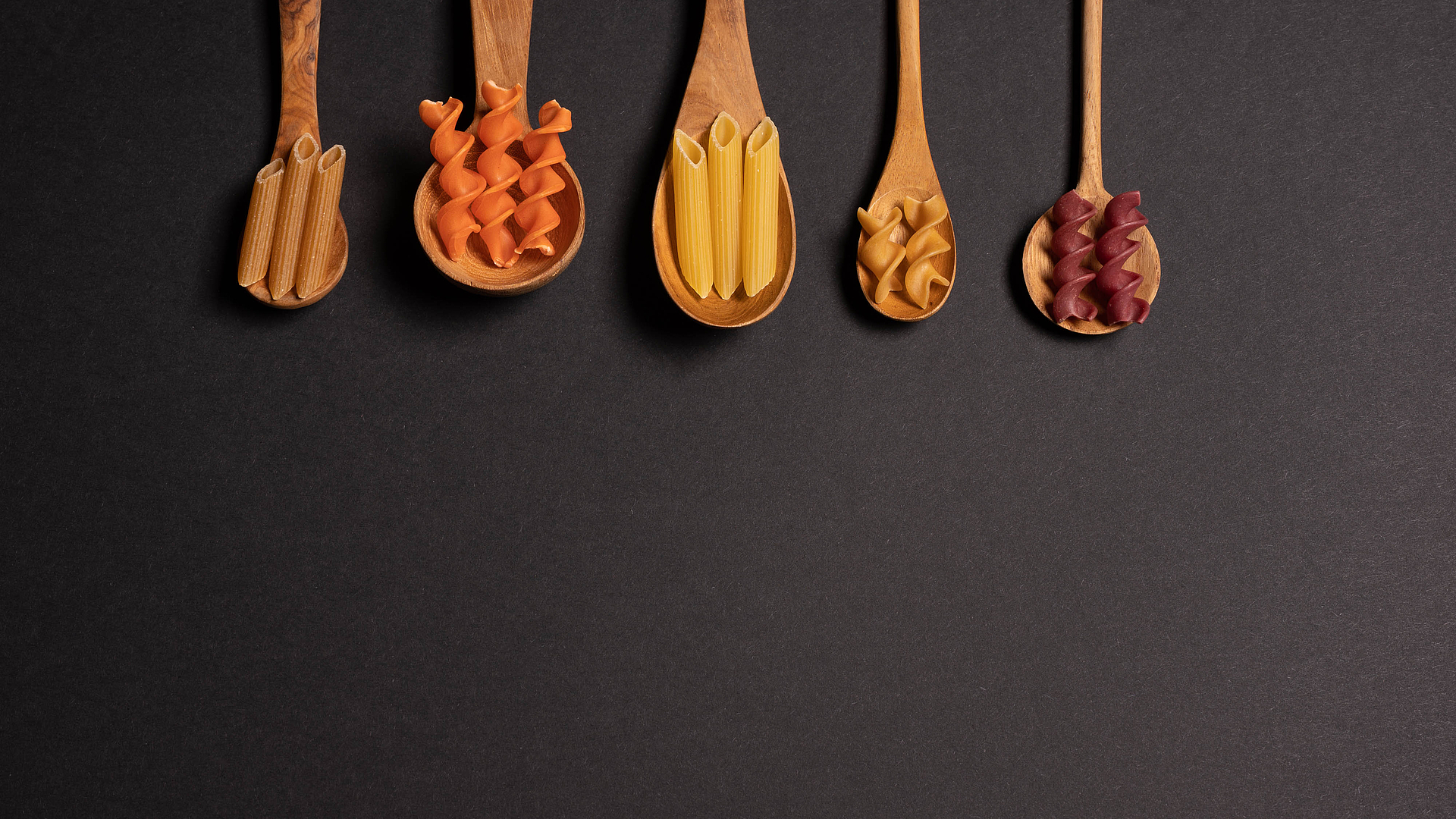
From algae to zucchini: the diversity of pasta
The world of pasta not only comprises a range of different shapes, but also several pasta varieties made of alternative cereals. This diversity opens up many options, not least for people with a gluten intolerance. Read on to find out more about the pasta alternatives...
Welcome to the world of pasta
When fresh pasta is served up in our favourite restaurant accompanied by a hearty “buon gusto”, we can already feel the Calabrian sun on our skin and imagine ourselves lying on Tuscany’s most beautiful beaches, enjoying a view of the azure Mediterranean sea.
Yes, we love pasta. Because it’s so much more than just a favourite Mediterranean dish made of white flour. Are you now thinking of whole grain? Yes, you’re right. But we’re also thinking of “pseudo-cereals” such as buckwheat. And of pulses such as lentils. Not to mention soy pasta, low-carb pasta, etc. etc. etc.
What types of pasta are available? How are they different from “normal” pasta? And how do we cook them? First, the good news: you can eat a much healthier diet with many pasta alternatives.
Innovative options: pseudo-cereals and pulses
There’s no doubt about it, Europeans love pasta: according to a Statista survey, around 15.8 million people in Germany alone ate pasta several times per week in 2021. But our digestive system is happier when we don’t only consume durum wheat. Spaghetti bolognese works just as well with other types of pasta, for example.
Amaranth, quinoa and buckwheat (e.g. in Japanese soba noodles) are pseudo-cereals. They’re ideal as part of a gluten-free diet and they go really well with creamy sauces because they have a slightly nutty taste. What’s more, the seeds are very rich in minerals. For example, amaranth contains three times more calcium than normal wheat.
Pasta from pulses such as lentils and chickpeas are also popular alternatives to durum wheat pasta. But when cooking lentil pasta make sure you keep an eye on the time, as the right timing is essential. If you cook it slightly too long it becomes mushy. Iron-rich edamame pasta made from green soy beans is also becoming increasingly popular, and it’s consistency is similar to ordinary pasta.
A clear conscience with low-carb pasta
If you want to follow a low-carb and gluten-free diet, you can swap your usual pasta with courgetti (= courgette spaghetti). But you don’t have to give up eating pasta made from dough. The question to ask is “what nutritious ingredients do foods contain”? Pasta from pulses, pseudo-cereals and soy beans contain lots of plant protein and essential dietary fibres, for example. But not all carbs are the same:
- Buckwheat pasta contains up to 70 grammes of complex carbohydrates, which raise your blood sugar more slowly and release energy over a longer period than classic white flour pasta.
- Beluga lentil pasta contains around 25 grammes of protein
- Quinoa pasta contains around 26 grammes of carbohydrates
- Soy bean pasta contains around 20 grammes of dietary fibres
You prefer low-calorie pasta? Then noodles made from konjak flour are the right choice for you. Shirataki noodles – which you may already know from Asian cuisine – only contain 9 calories per 100 grammes. They are low in fat, sugar and gluten as well as being very low in carbohydrates. Algae pasta also scores highly with its valuable omega-3 fatty acids. We recommend a good, home-made tomato sauce as an accompaniment. Buon appetito!